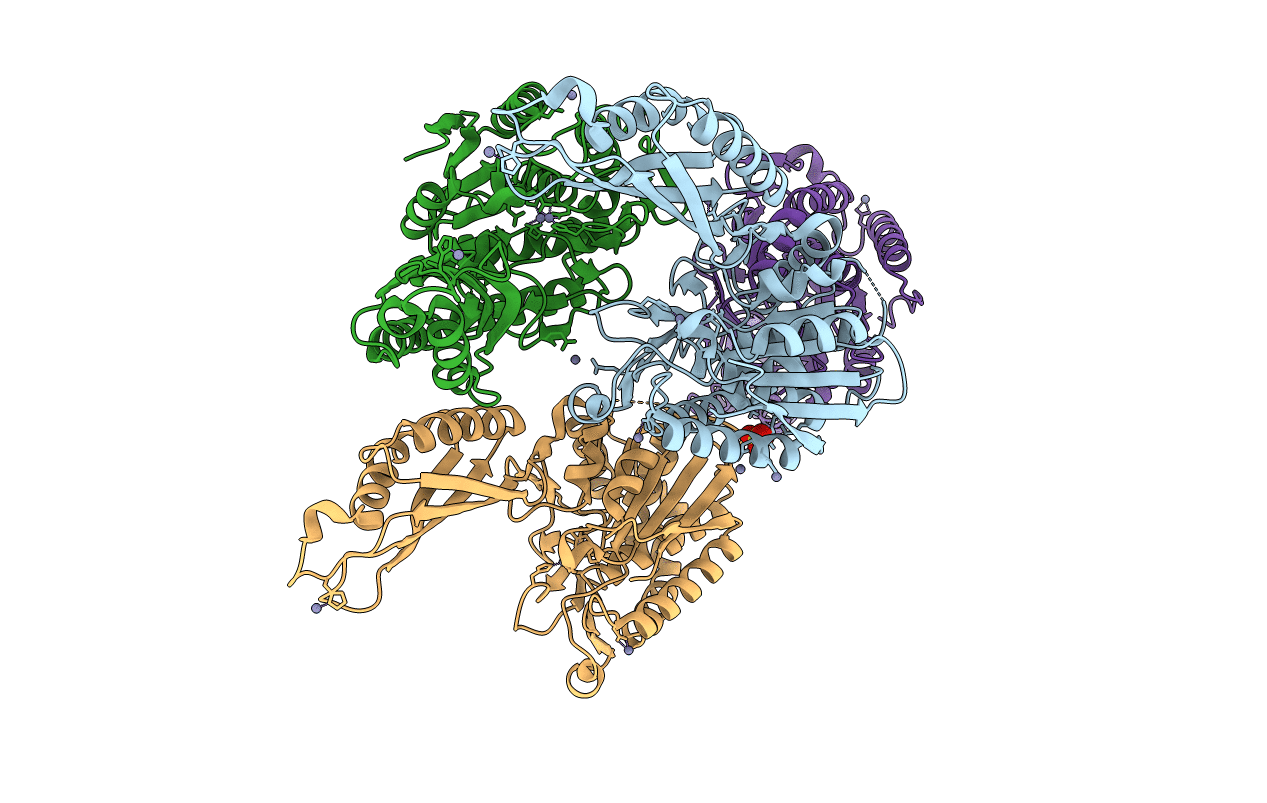
Deposition Date
2021-03-26
Release Date
2021-04-14
Last Version Date
2023-10-18
Entry Detail
PDB ID:
7M6U
Keywords:
Title:
Crystal structure of a circular permutation and computationally designed pro-enzyme of carboxypeptidase G2
Biological Source:
Source Organism:
Pseudomonas sp. (strain RS-16) (Taxon ID: 312)
synthetic construct (Taxon ID: 32630)
synthetic construct (Taxon ID: 32630)
Host Organism:
Method Details:
Experimental Method:
Resolution:
2.59 Å
R-Value Free:
0.27
R-Value Work:
0.22
R-Value Observed:
0.22
Space Group:
P 1 21 1


